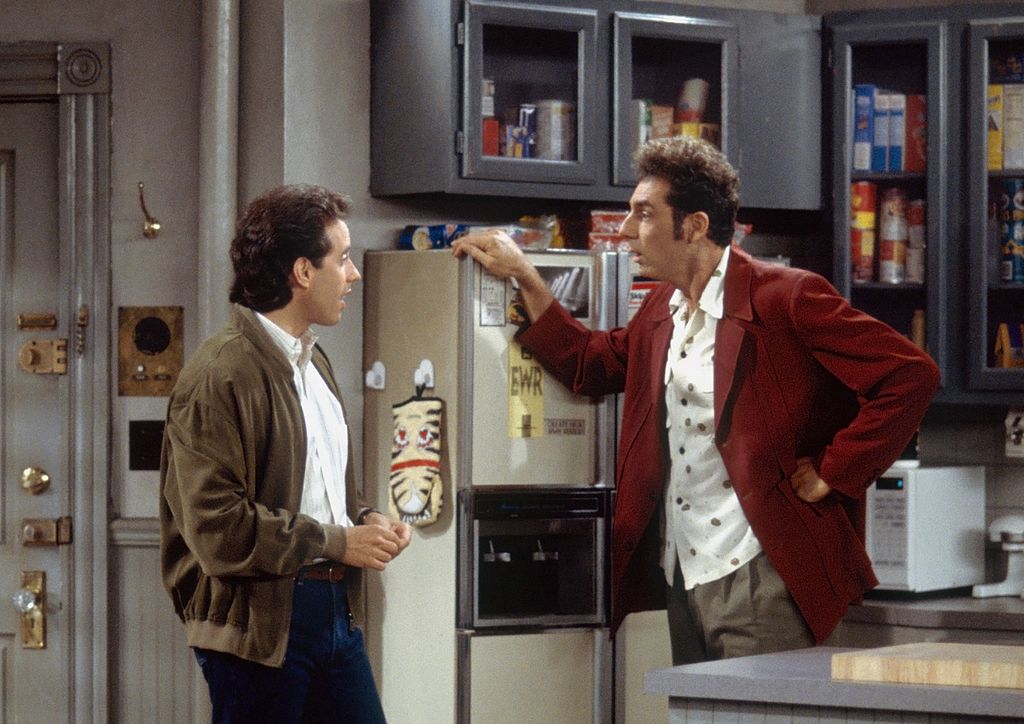‘Seinfeld’: Fans Theorize That Cosmo Kramer Was Independently Wealthy
Cosmo Kramer was an enigma. Jerry Seinfeld’s eccentric neighbor never seemed to have a job. He spent most of his time coming up with crazy schemes and pilfering cold cuts and fruit from Jerry. Lawsuits, weird antics, and strange money-making schemes literally took up every second of his day. While Seinfeld was filmed in the 1990s, you still needed money to live in the Big Apple. So, how did Kramer manage to stay afloat in one of the world’s most expensive cities? Some fans theorize that the clumsy Kramer may have been independently wealthy.
Fans theorize that Kramer was independently wealthy
Fans of Seinfeld know very little about Kramer’s background. His mother, Babs Kramer, however, is seen on a few occasions. First described as a heavy drinker, it’s later revealed that she works as a matron in a restaurant bathroom. His father is unnamed, and he never really mentions him.
Fans have theorized that perhaps Kramer comes from family money on his father’s side. Family money would explain how he manages to live in New York without ever actually holding a job. Sure, he’s allegedly on strike from a bagel store for more than a decade, but strike wages aren’t going to keep him in vintage button-down shirts. It’s also assumed that Kramer is an only child, which would mean he’d be the sole recipient of any familial wealth.
By all accounts, Kramer manages to just skate by
Kramer’s character is supposed to be mysterious, so it’s no surprise that his fiduciary situation is kept a bit ambiguous. We do know that George once suggested that Kramer falls “ass-backward into money.” That seems like it might be the most realistic answer to questions about his financial situation.
Through the series illustrious run, Kramer manages to sue a coffee company and a tobacco company. He publishes a coffee table book, invents a bra for men, and sells his life stories to Elaine’s boss. While most of his schemes don’t work out in the long run, they do manage to help him garner a little bit of cash.
Add in the fact that he pretty much pilfers life’s necessities from his neighbor, and George’s explanation makes a lot of sense. While money is a necessity to live, for Kramer, creativity is just as important. If you can manage to lower your topline, a little money can go a really long way.
The wonder of rent-controlled apartments.
George’s explanation for Kramer’s financial situation is further shored up by his living situation. As Jerry once explained, the building that he and Kramer live in is rent-controlled. In one episode, when he tries to get Elaine into the building, he explains the rent-controlled apartment above him was going for just $300 per month. The $300 figure was less than one-quarter of what apartments in Seinfeld’s neighborhood were going for at the time.

Rent-control is a bit of mythical creature for New Yorkers. While often used to explain the way TV characters manage to swing New York City apartments, it’s not all that easy to actually come by. Friends writers used the trope to explain how Monica and Rachel could afford their spacious pad. Sex and the City’s Carrie Bradshaw was also apparently the lucky recipient of a rent-controlled abode. If those characters had one, it would stand to reason Kramer did too.


